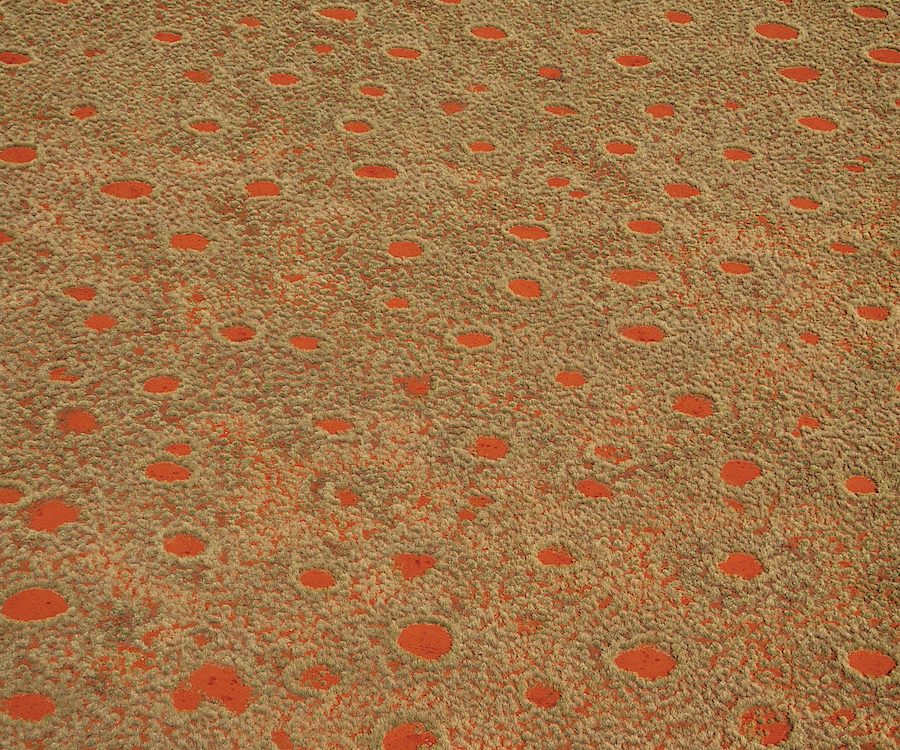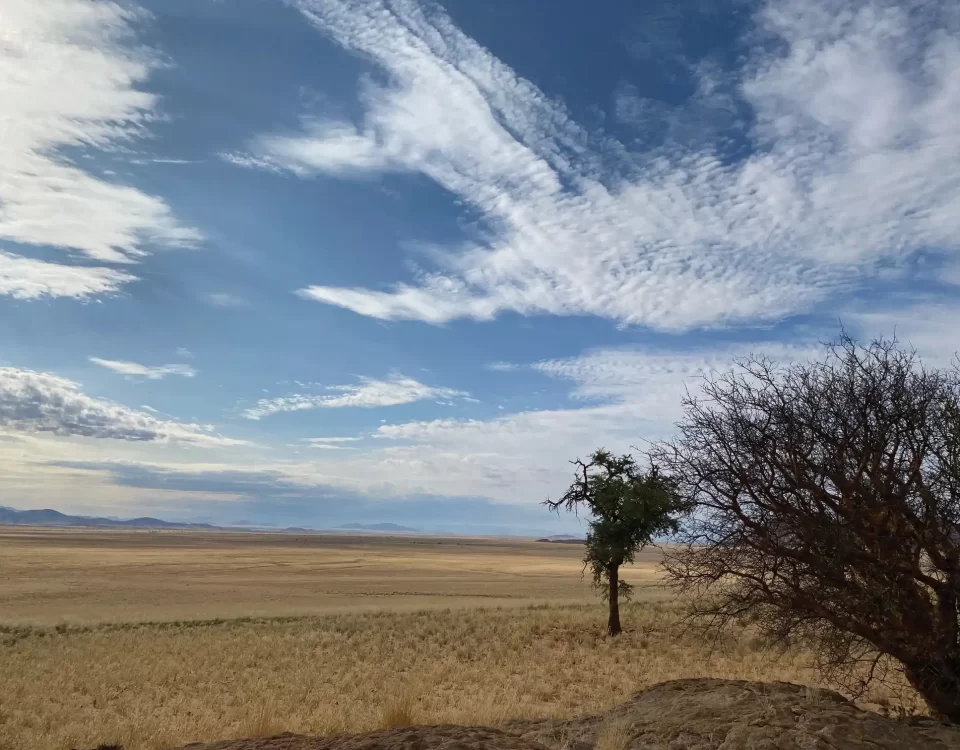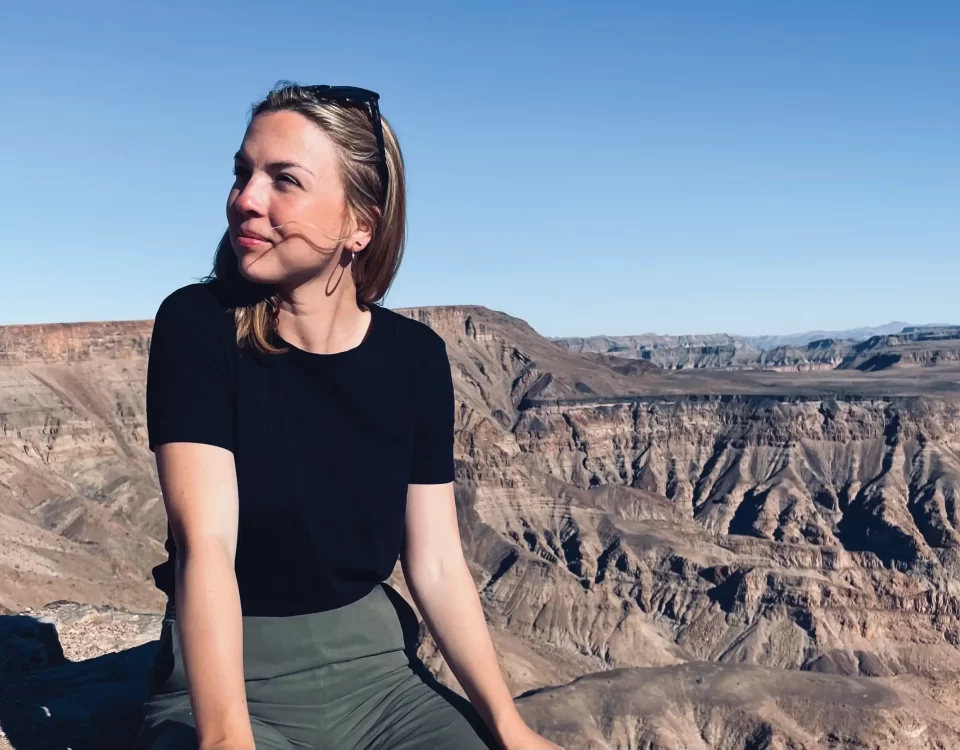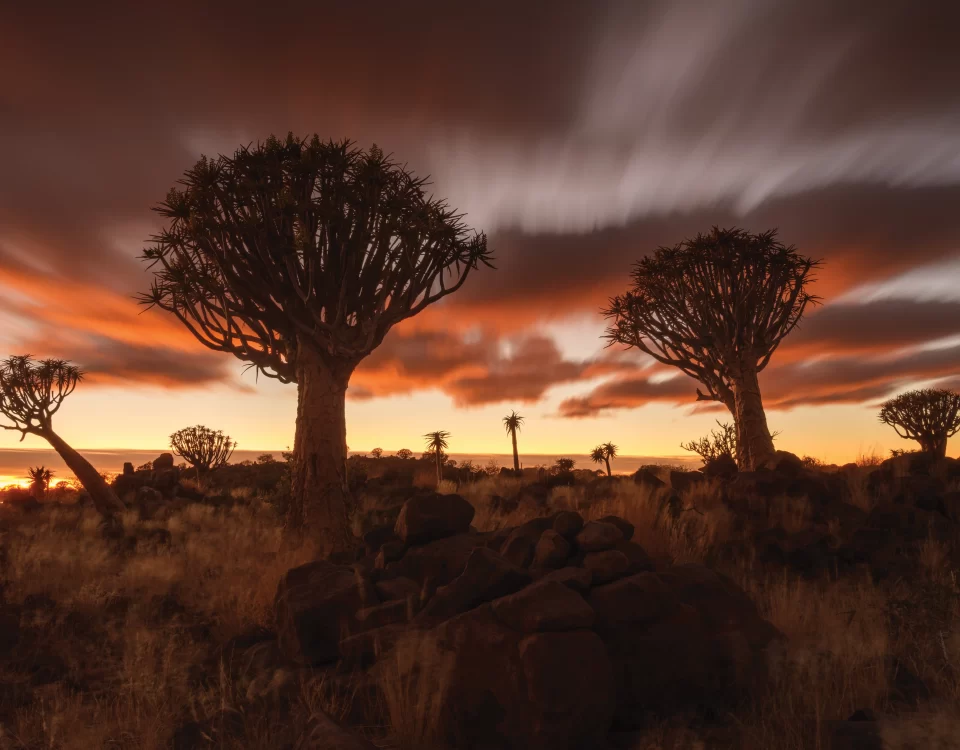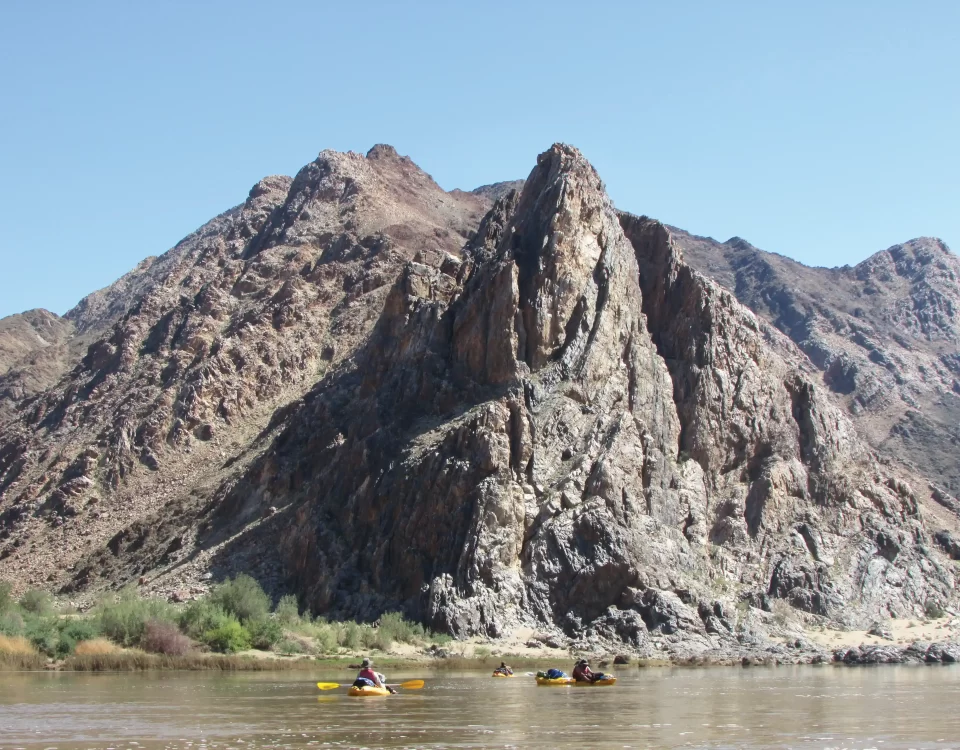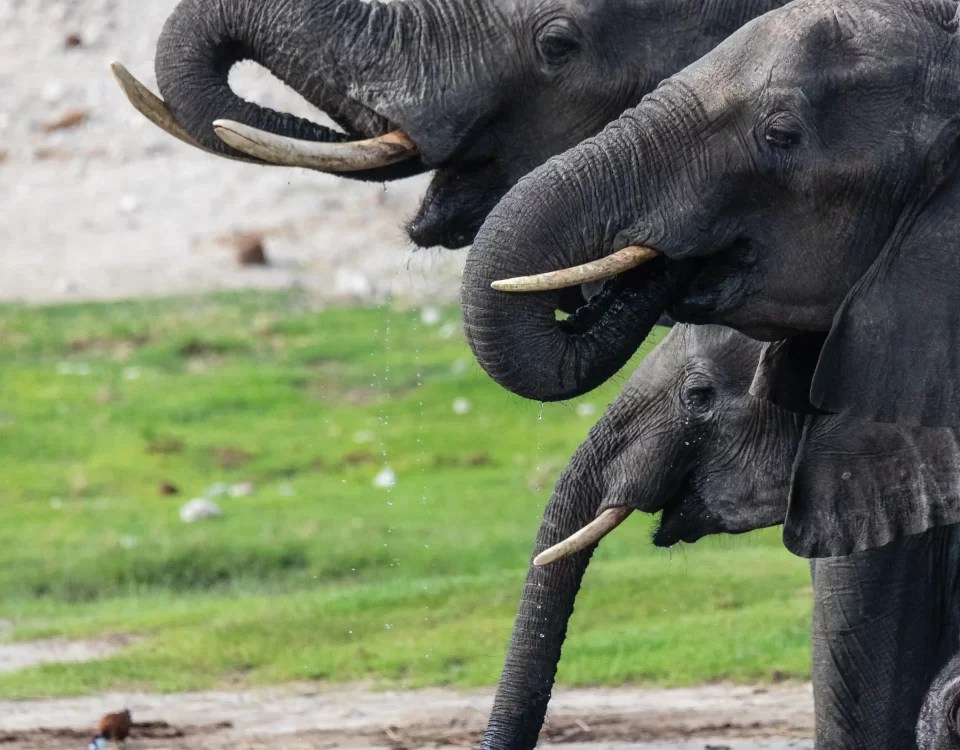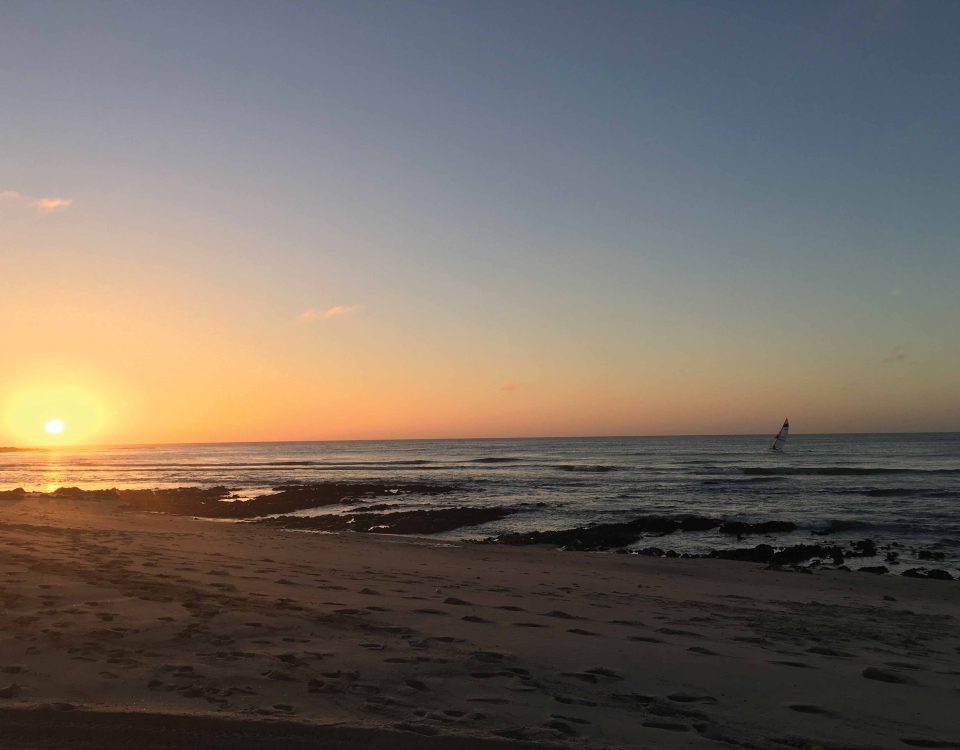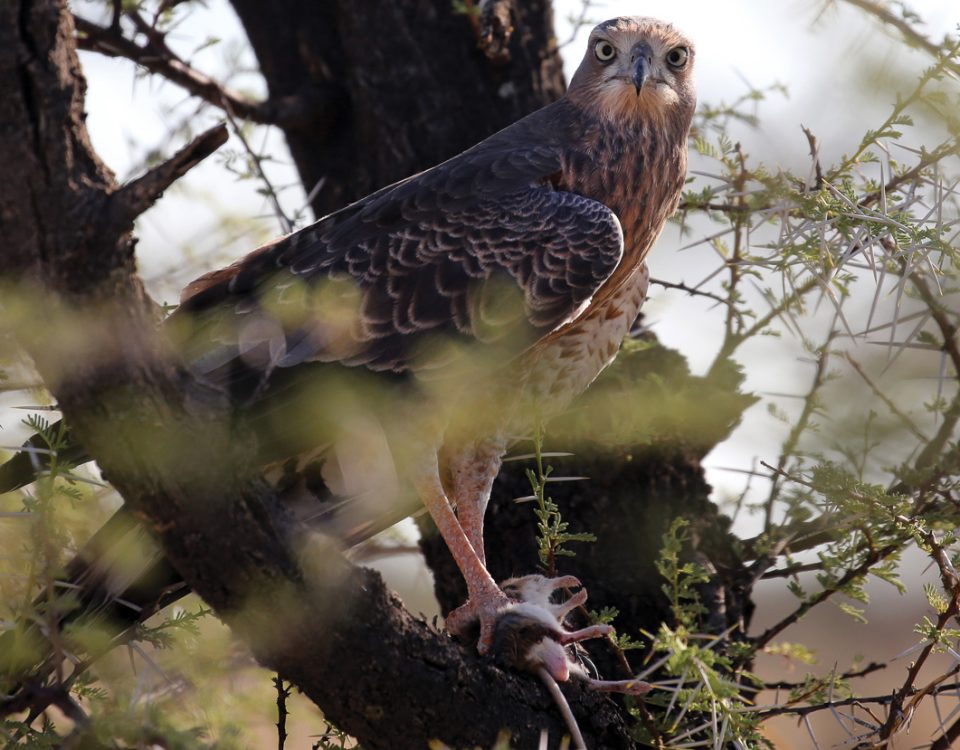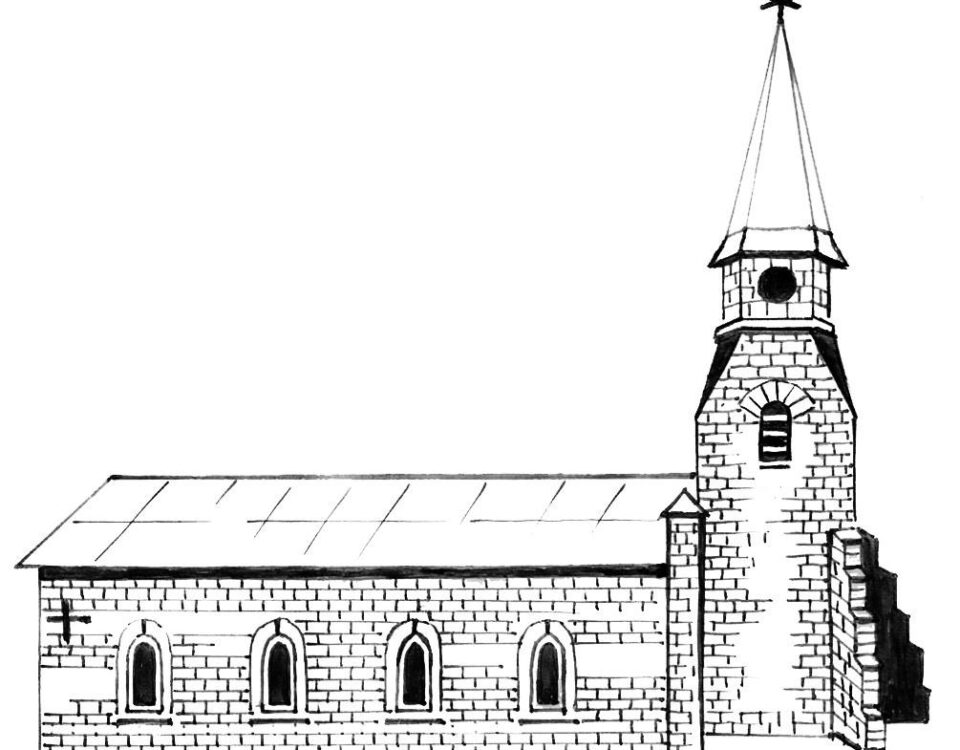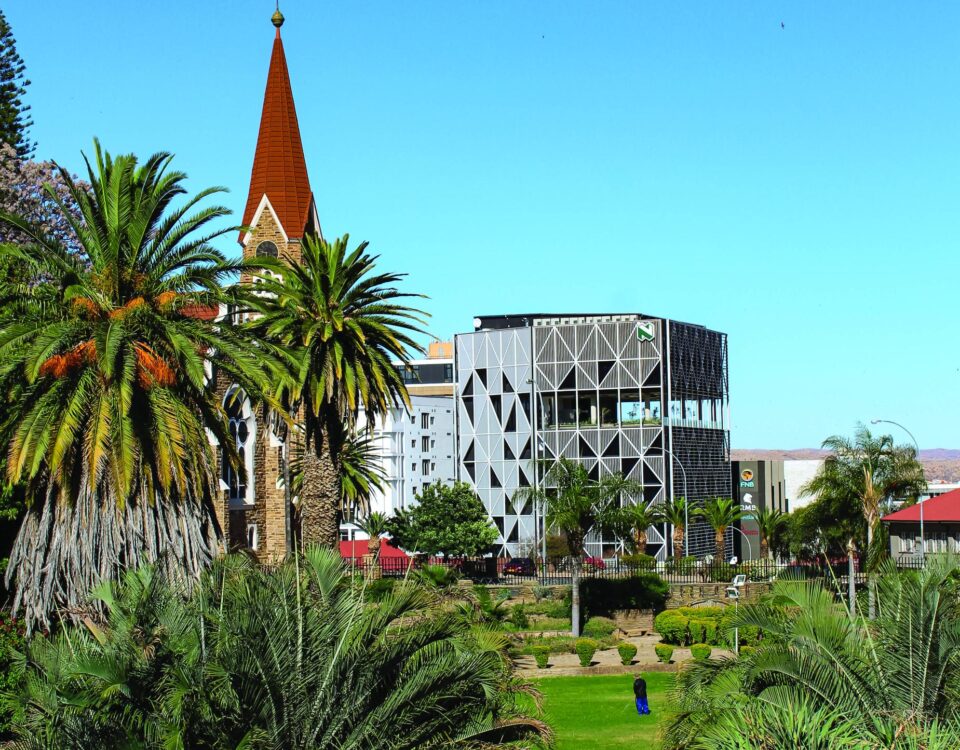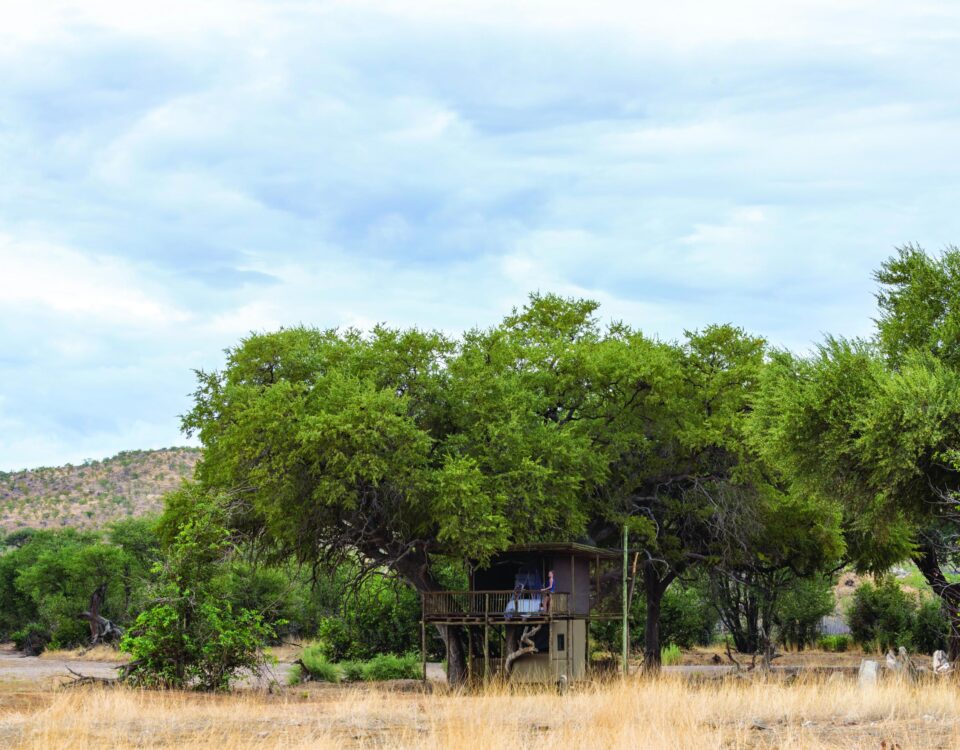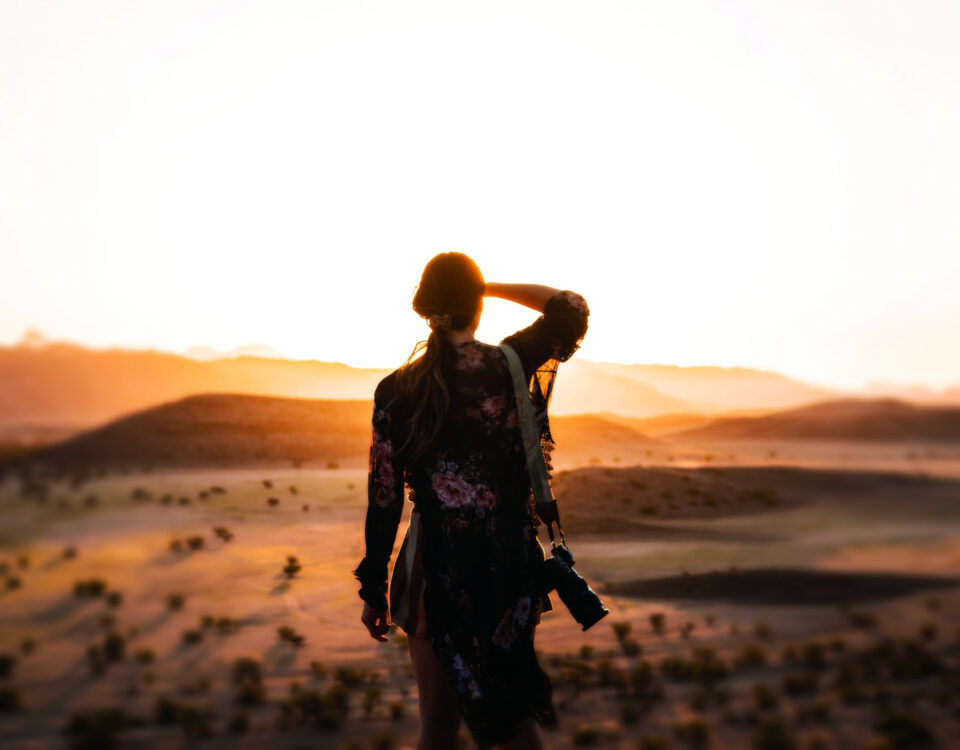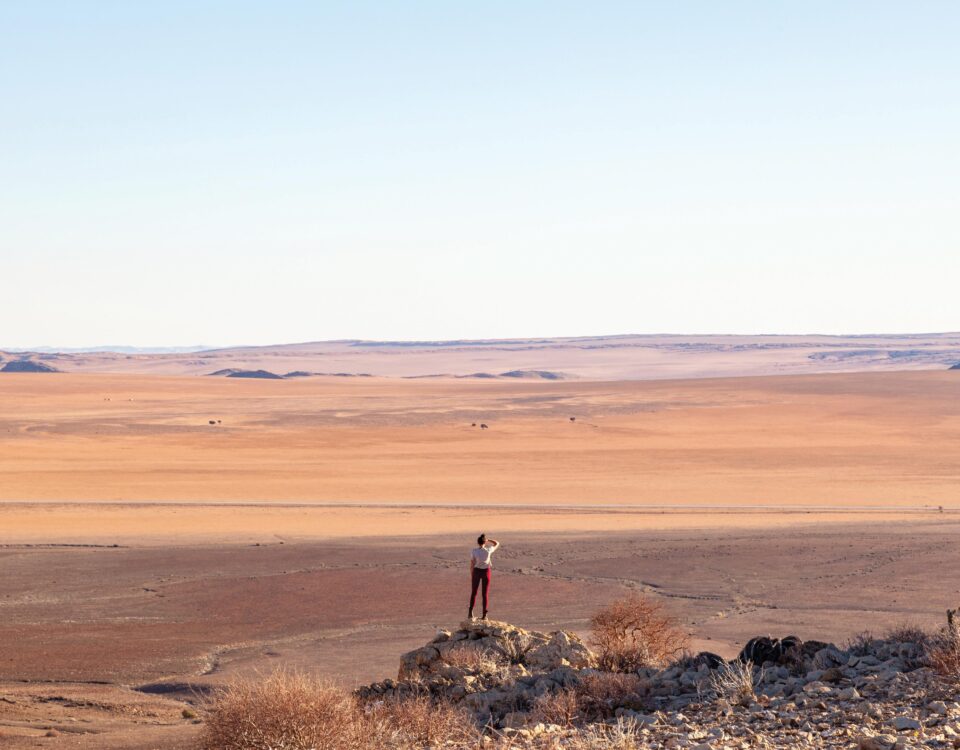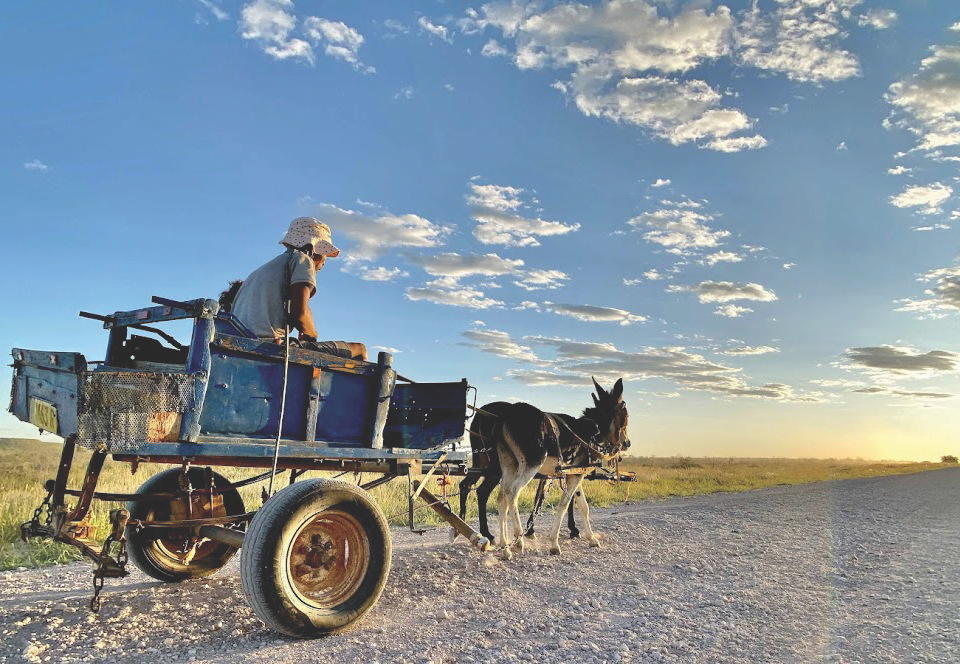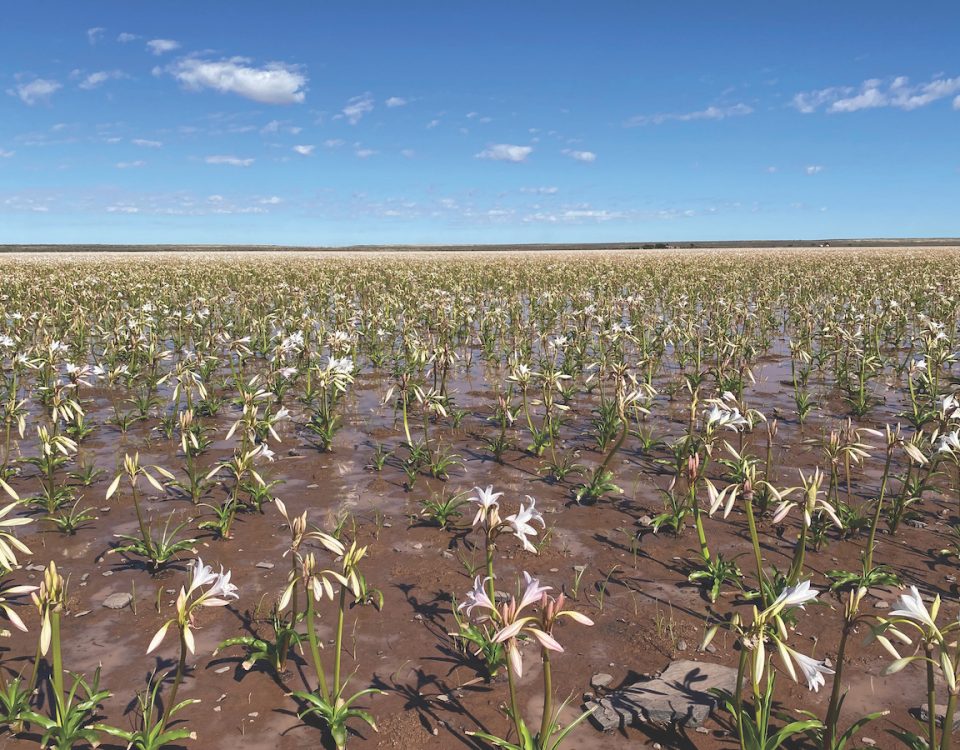[vc_row][vc_column][vc_column_text]
News Adventure Birding Books Conservation Culture Flora Photography Seasons Things to Do
[/vc_column_text]
September 27, 2023
The latest theory on fairy circles carries a lot of weight and once again shows the remarkable adaptations done by plants to survive in harsh environments like the Namib Desert.
September 27, 2023
I cannot find the word for “that feeling when you return to a place of familial significance, a place your heart remembers but you have no living memory of”.
September 27, 2023
As I stand on a sandy hill dipped in bronze, the sun presents its colours for the day and I could cry. It’s perfection and I am reminded of the saying that simple things can be the best. Nature, light and Namibian coffee.
September 27, 2023
At first I am somewhat nervous about driving on the left side, but luckily this fades after a while. The road is long and straight. Around sunset, we marvel at the colours of the landscape – pastel and gold!
September 27, 2023
It is mid-April. We are doing a canoe trip down the Orange River from Vioolsdrift to Sendelingsdrift by courtesy of Umkulu Safaris, based at The Growcery (spelling correct) on the southern bank of the river.
September 27, 2023
The waterway leads us to Serondela, a classic safari lodge accessible only by boat. En route to our luxury destination from Kasane the river is buzzing with houseboats, tourists on cruises, fishermen and service vessels.
September 25, 2023
Summer in Namibia is the festive and holiday season. It is the time of a great trek northwards from the capital on the central highland, to traditional homes and families or westward to the cool Atlantic coast and social gatherings, big sporting events and lazy beach days.
September 5, 2023
Encounter Pale Chanting Goshawks, Namibia's common raptors. Learn about their habits, ringing history, and stunning sightings.
June 21, 2023
In this series, we highlight some of the lesser-known or under-visited national monuments in Namibia that are often overlooked by tourists. The Rhenish Mission Church in Keetmanshoop, Namibia, is a true architectural treasure.
June 21, 2023
All aboard for the Chameleon Safaris city and township tour! Buckle up for a half-day’s worth of essential Windhoek sightseeing, Namibia’s favourite street food and a feel-good pitstop along the way.
June 4, 2023
Welcomed by handshakes and friendly introductions, arriving at Hobatere is like coming home. The journey begins from the moment guests enter the ≠Khoadi-//Hôas conservancy at the main gate, framed by two towers reminiscent of classic stone castles. Barely three kilometres into the conservancy, we spot the first wildlife. Stocky mountain zebras trot across the jeep track, shy to show us their striped pyjamas as they disappear between the mopane forest dotted with honey-coloured boulders.
March 24, 2023
Discover Namibia, a land of diverse landscapes and rich cultural heritage. From the red dunes of the Kalahari and the ancient trees of the Namib Desert to the vibrant coastal charm of Swakopmund, each region offers unique adventures. Experience Namibia's magic and connect deeply with its stunning nature and history.
March 24, 2023
Untouched landscapes spanning as far as the eye can see. An abundance of wildlife roaming free, as nature intended, over bushveld, desert and wetland. A world of birds brimming with sought-after endemic species, found nowhere else on the planet. To the novice this may seem like scenes from the Lion King. In Namibia it is commonplace.
March 7, 2023
Discover RuralRevive: a transformative project empowering Maltahöhe's community and local economy. Partnering with Wolwedans Foundation's Vision 2030, RuralRevive aims to build sustainable and inclusive tourism. Learn about the five focus areas and the positive impact on marginalized women, farmers, and youth. Join the movement for resilient, inclusive conservation tourism economies.
March 7, 2023
Experience the beauty of Sandhof lilies at Farm Sandhof: a riot of colors amidst the pan's crisp blue sky. Witness the marvel of Crinum paludosum flowers thriving after rainfall. Join the adventure and capture nature's miracles on lens, with a well-deserved treat awaits at The Lily Deli in Maltahöhe.

